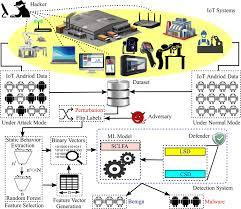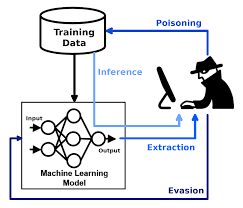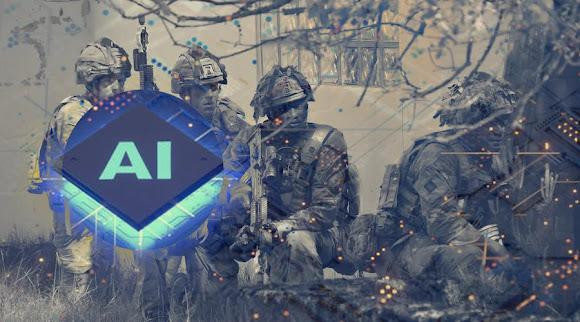Applications Of AI In National Defense And Government Industry

Introduction
The use of artificial intelligence is growing. 90% of top companies are investing in AI on an ongoing basis. Customers who are pleased with the personalized experiences they receive from brands as a result of AI begin to expect the same experience from every brand and institute with which they interact. According to Accenture, 92% of US citizens believe that improved digital services would improve their perception of government. As a result, governments are eager to invest in AI.
By incorporating AI into every aspect of their work, the government and public sector stand to gain significantly. AI in government must consider privacy and security, compatibility with legacy systems, and evolving workloads. There are numerous benefits to implementing AI in defense and government. Here, we discuss what is AI In Government Industry, the benefits of AI, its use cases, and more, in-depth.
What is AI in government sector?
Artificial Intelligence(AI) has a variety of applications in government. It can be used to advance public policy objectives (such as emergency services, health, and welfare) as well as to help the public interact with the government (through the use of virtual assistants, for example). “Applications of artificial intelligence to the public sector are broad and growing, with early experiments taking place around the world”, according to Harvard Business Review. According to Hila Mehr, Harvard University’s Ash Centre for Democratic Governance and innovation, AI in government is not new, with postal services using machine methods to recognize the handwriting on envelopes to automatically route letters in the late 1990s. The use of AI in government has numerous advantages, including cost savings (for example, by reducing the number of office staff) and reduced opportunities for corruption. It does, however, come with risks. In order to make the best AI and ML models, we need high amounts of image datasets.

Benefits of Dataset For Machine Learning in the government?
Machine learning and deep learning, computer vision, speech recognition, and robotics, are at the heart of AI in government services. When put to use, these techniques produce real, measurable results. Natural Language Processing automatically extracts and connects relevant information from intelligence sources, allowing analysts to discover actionable insights. Predictions of failure rates help ensure that military equipment is well maintained and ready to deploy when needed. Cyber anomaly detection has the potential to transform cybersecurity strategies in government systems. The possibilities are limitless, but they are only just the beginning to take shape.
1. Automation of Routine tasks: Large amounts of data, particularly those collected by the military, aerospace, and other government sectors, cannot be processed manually by humans. However, AI can complete time-consuming (and tedious) tasks quickly and accurately. Machine learning and deep learning, in particular, excel at tasks that are well-defined, involve massive amounts of data, and necessitate a great deal of repetition. AI streamlines operations and augments the workforce by automating simple, well-defined tasks. Employees can then devote more time to decisions requiring human judgement. For example, the United States Citizenship and Immigration Services (USCIS) employs Emma, a computer-generated virtual assistant, to answer questions and direct visitors to the appropriate sections of the website. A human, on the other hand, can better explain USCIS decisions and advise an individual on the next steps.
2. Perform mission-critical tasks: AI can support critical capabilities in government agencies such as the united states department of defense (DoD). These include improving situational awareness and decision making; increasing the safety of equipment such as aircraft, ships, and vehicles in hazardous environments; predicting when critical parts will fail, automating diagnosis, and planning Maintenance. AI also aids in the improvement of nautical, terrain, and aeronautical charting, which is critical to DoD missions, allowing for safer and more precise navigation as well as better surveillance.
3. Advance research and development: AI, high-performance computing (HPC), and analytics work together to power research in medicine, genomics, engineering, seismology, astrophysics and many other fields. Government-funded research stands to benefit the most from AI techniques used in academia and the private sector. For example, AI algorithms enable faster and less expensive predictions of 3D protein structures from amino acid sequences. This information may aid researchers in better understanding diseases and developing drugs to treat them.

Dataset For Machine Learning is required in order to prepare images for training machine learning models.
What are the uses of ML Dataset in National Defense?
The potential applications of AI in government are numerous, with Deloitte believing that cognitive technologies could eventually revolutionize every facet of government operations. There are six types of government problems are suitable for AI applications.
1. Resource allocation, for example, where administrative assistance is required to complete tasks more quickly.
2. Large datasets- where these are too large for employees to work efficiently and multiple datasets could be combined to provide greater insights.
3. Experts are in short supply, which includes areas where basic questions can be answered and niche issues can be learned.
4. Predictable scenario- historical data makes the situation predictable.
5. Procedural-repetitive tasks with binary inputs or outputs.
6. Diverse data- where data takes a variety of forms (such as visual and linguistic) and needs to be summarized regularly.
Potential and actual uses of AI in government can be divided into three broad categories: those that contribute to public policy objectives; those that facilitate public interactions with the government, and others.

How can GTS help you with Dataset For Machine Learning?
We at Global Technology Solutions (GTS.AI) provide all kinds of data collection such as Image Data collection, Video Dataset, Speech Data collection, and text dataset along with audio transcription and Annotation Services. Do you intend to outsource image dataset tasks? Then get in touch with Global Technology Solutions, your one-stop shop for AI data gathering and annotation services for your AI and ML.